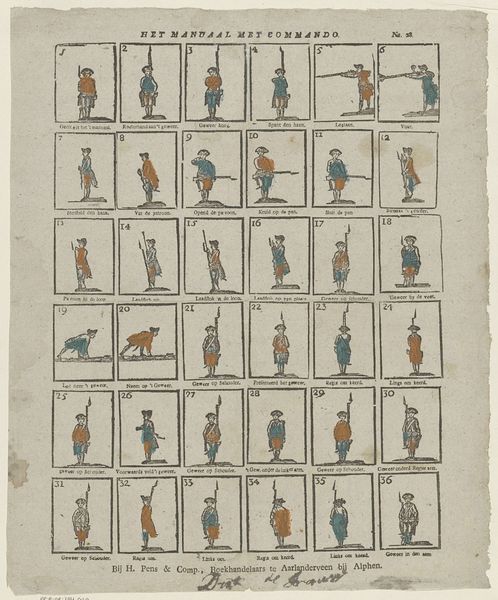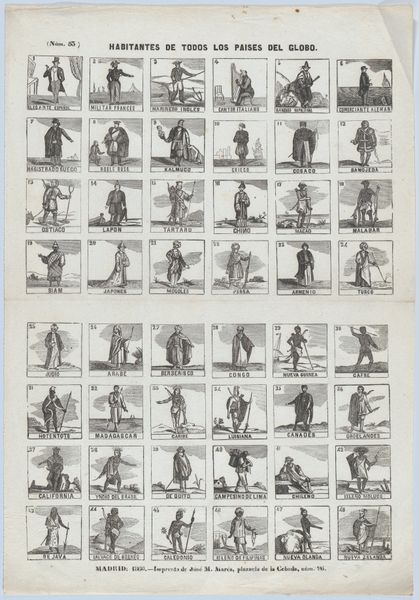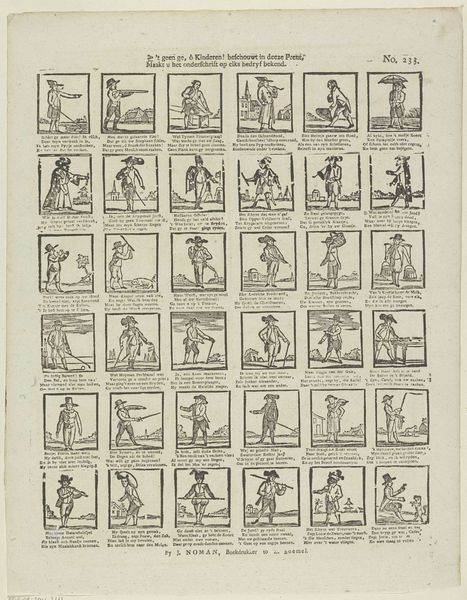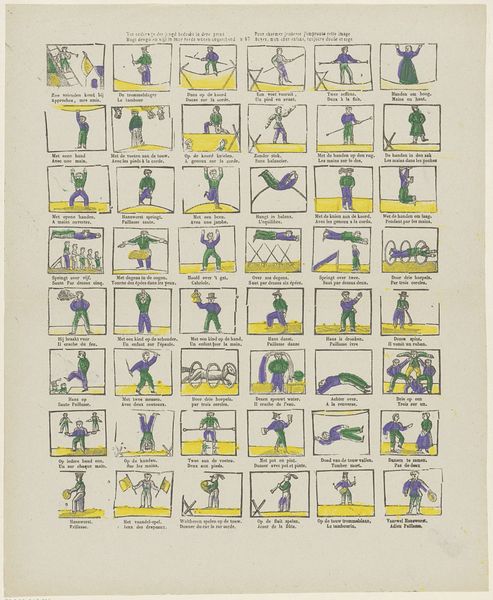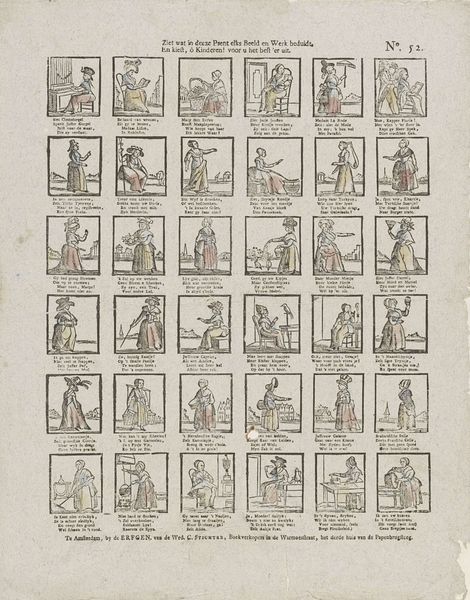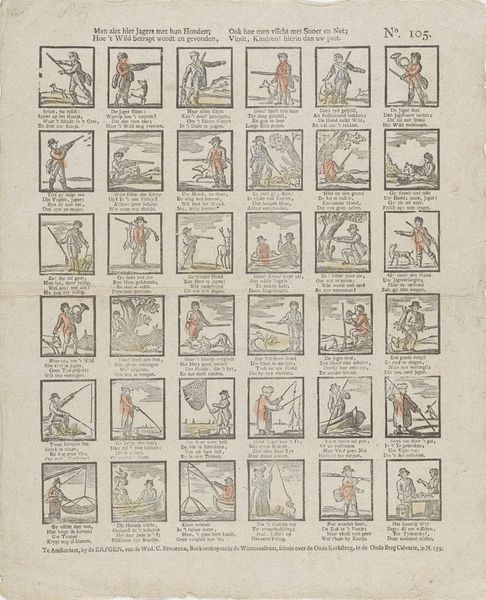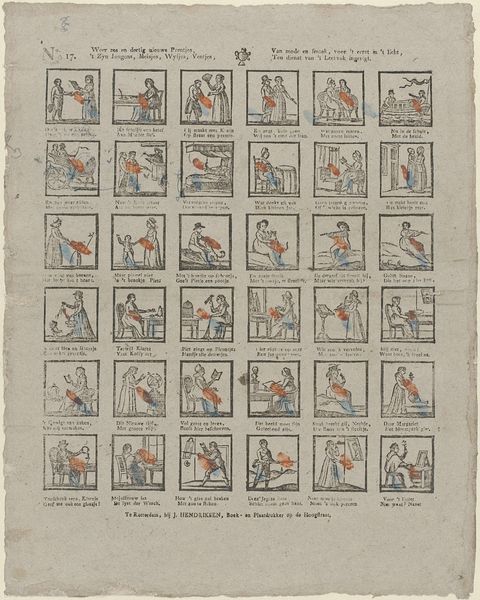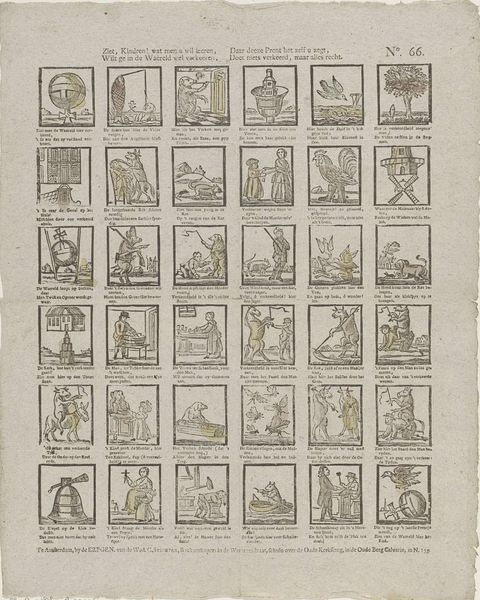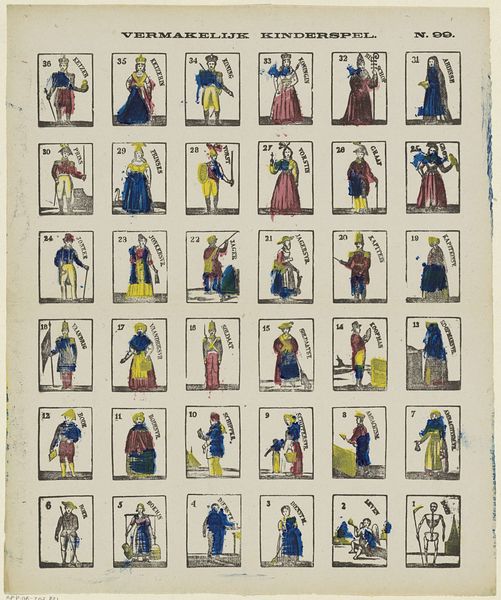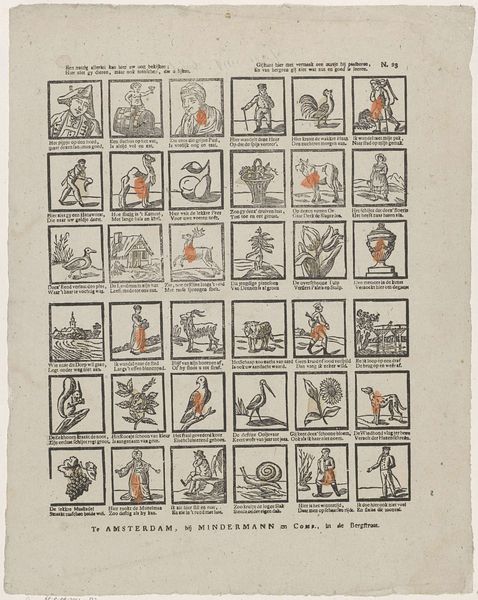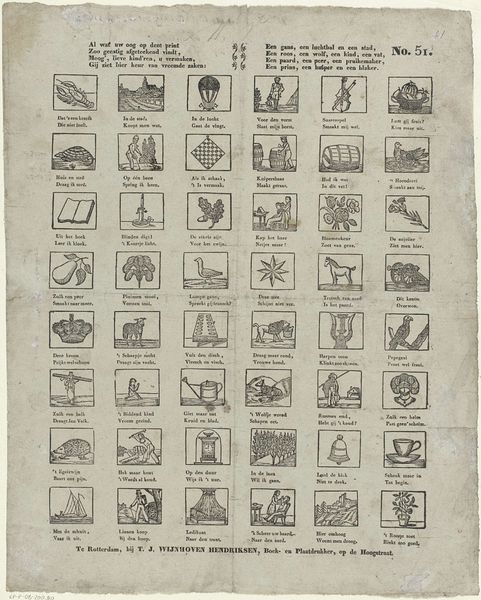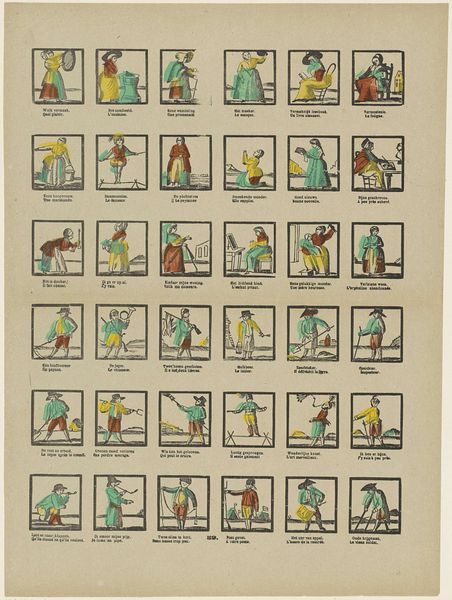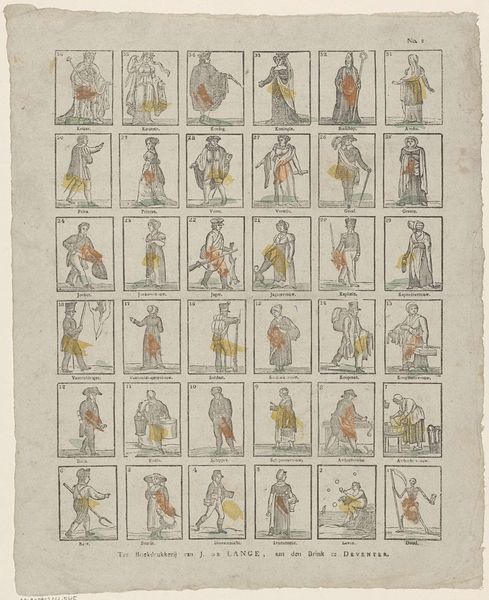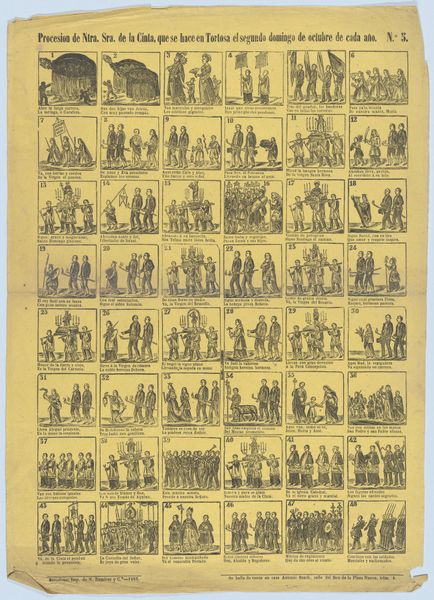
Voor kindren die het exerceeren / Uit deeze afbeeldsels willen leeren, / Vertoont zich, in dit prent-tafreel, / Het manuaal in zyn geheel 1715 - 1813
0:00
0:00
Dimensions: height 415 mm, width 325 mm
Copyright: Rijks Museum: Open Domain
Curator: Welcome to the Rijksmuseum. Today, we’re looking at an intriguing print dating from 1715 to 1813 titled, "Voor kindren die het exerceeren / Uit deeze afbeeldsels willen leeren, / Vertoont zich, in dit prent-tafreel, / Het manuaal in zyn geheel." Made by erven weduwe Cornelis Stichter, this work is an engraving on paper, presenting what seems to be a manual. Editor: My first impression is one of curious detachment. There’s a regimented quality to the rows of figures, but also a somewhat charming simplicity. Each figure, in their own numbered square, appears like a miniature soldier, caught in various poses. Curator: Absolutely. This print, falling into the genres of genre- and history-painting, served as a visual guide to military exercises for children. Academic in its precise depiction, it provides insight into the culture of military training and childhood in the 18th century. These images likely played a role in shaping societal attitudes towards military service. Editor: Looking closer, there's an inherent contradiction. While intended as a training manual, the stylized nature of the poses normalizes military action. Consider the context: children engaging with this print are internalizing these maneuvers as almost playful actions. It speaks volumes about the era’s approach to power, instruction, and possibly, militaristic indoctrination. How did societal norms influence how martial prowess and aggression were promoted to young demographics through these forms? Curator: Indeed, this work makes one consider how prints were distributed and consumed. Stichter's studio played a crucial role in disseminating knowledge and shaping public opinion, which emphasizes how intertwined printmaking and society truly were. Beyond military preparedness, this print reflects prevailing educational practices where visual aids were employed to disseminate skills and concepts to children. Editor: This artwork prompts deeper questions about what and why images become canonized, like these, how it relates to history and contemporary society, as well as what is transmitted, normalized and reproduced. Curator: Ultimately, this print reminds us that art objects are not static, and their significance evolves with our ever-changing cultural landscape. Editor: And, from a modern lens, we are left contemplating the complicated relationship that intertwines militarism, youth and popular visuals.
Comments
No comments
Be the first to comment and join the conversation on the ultimate creative platform.
